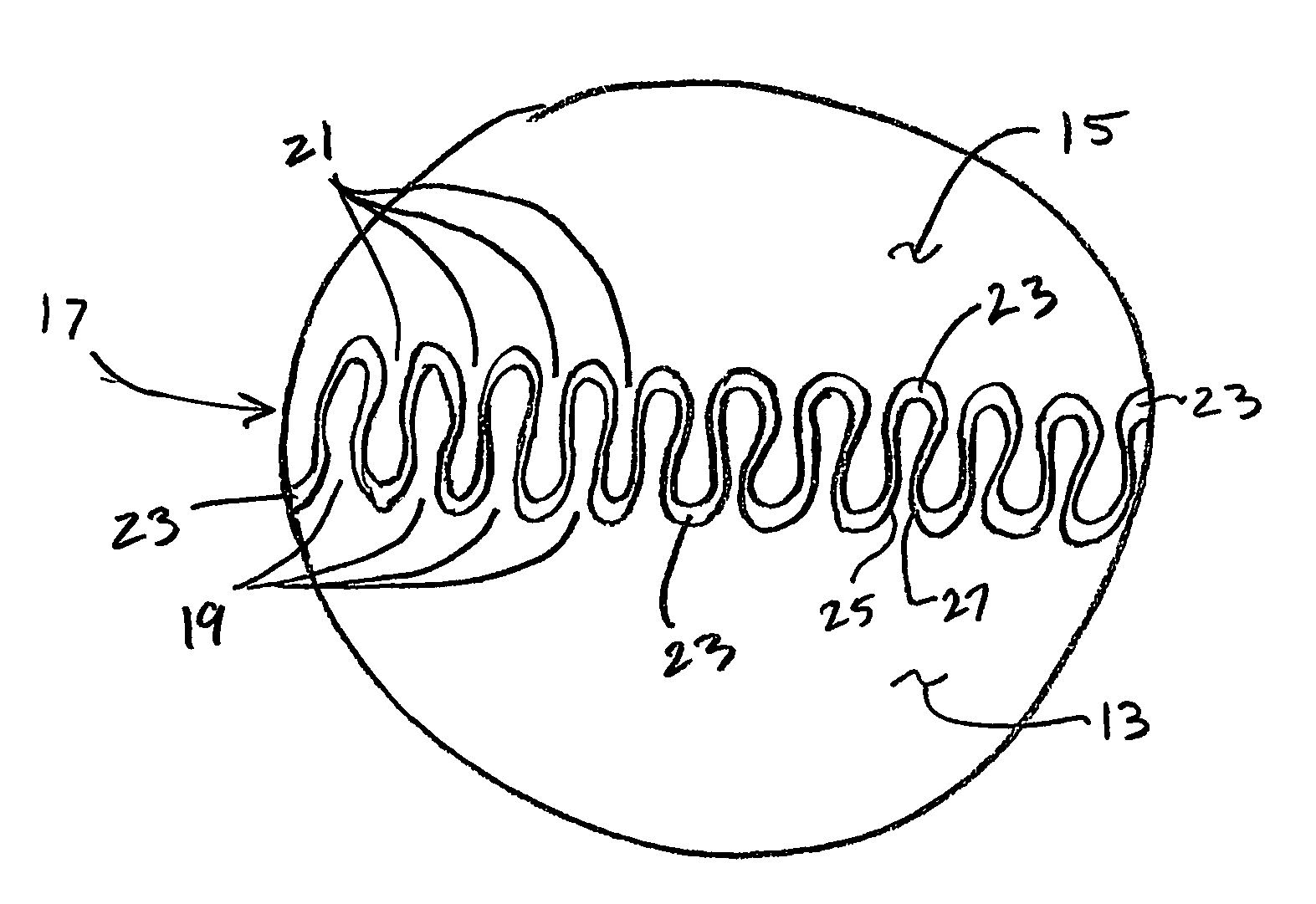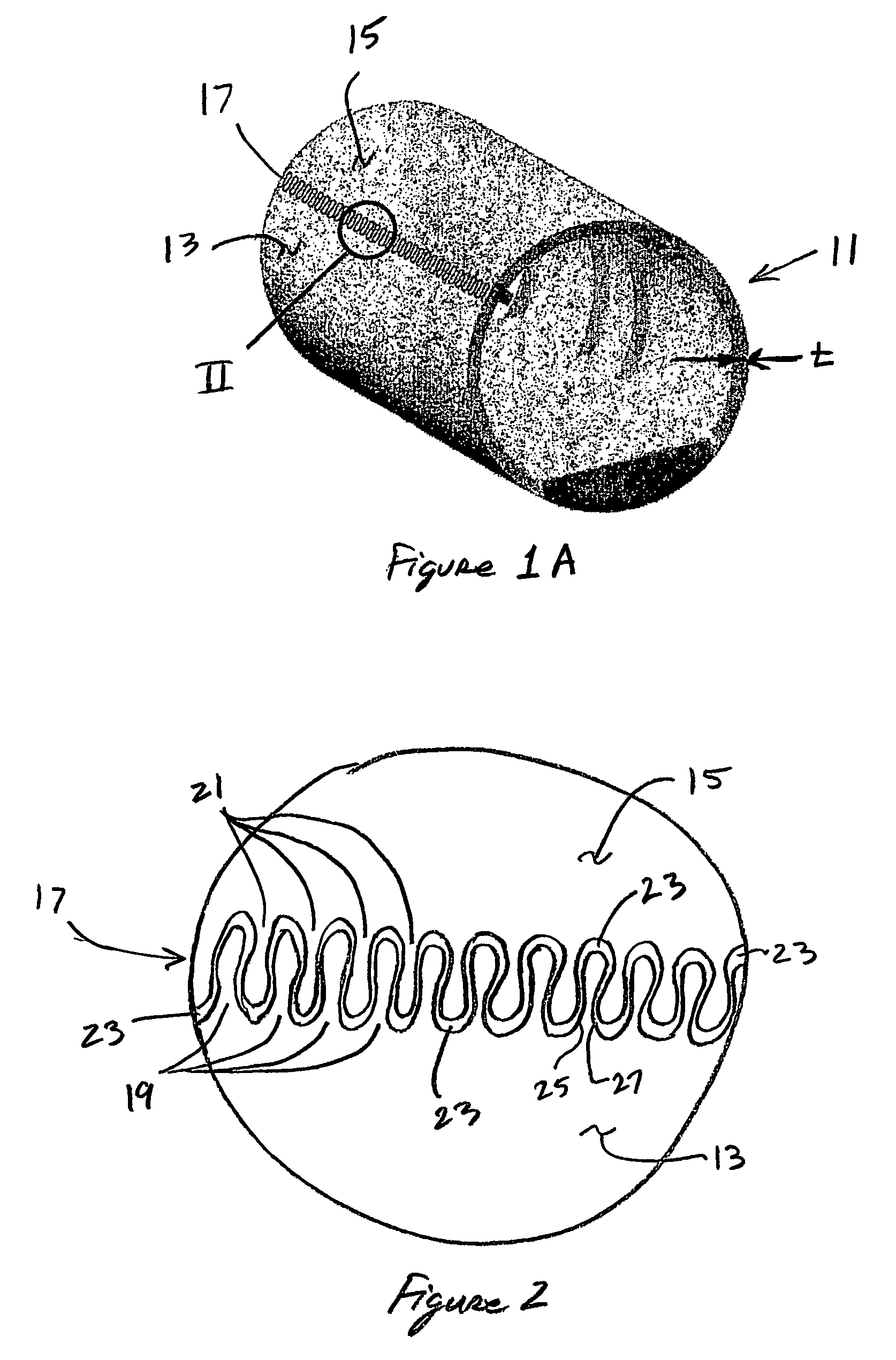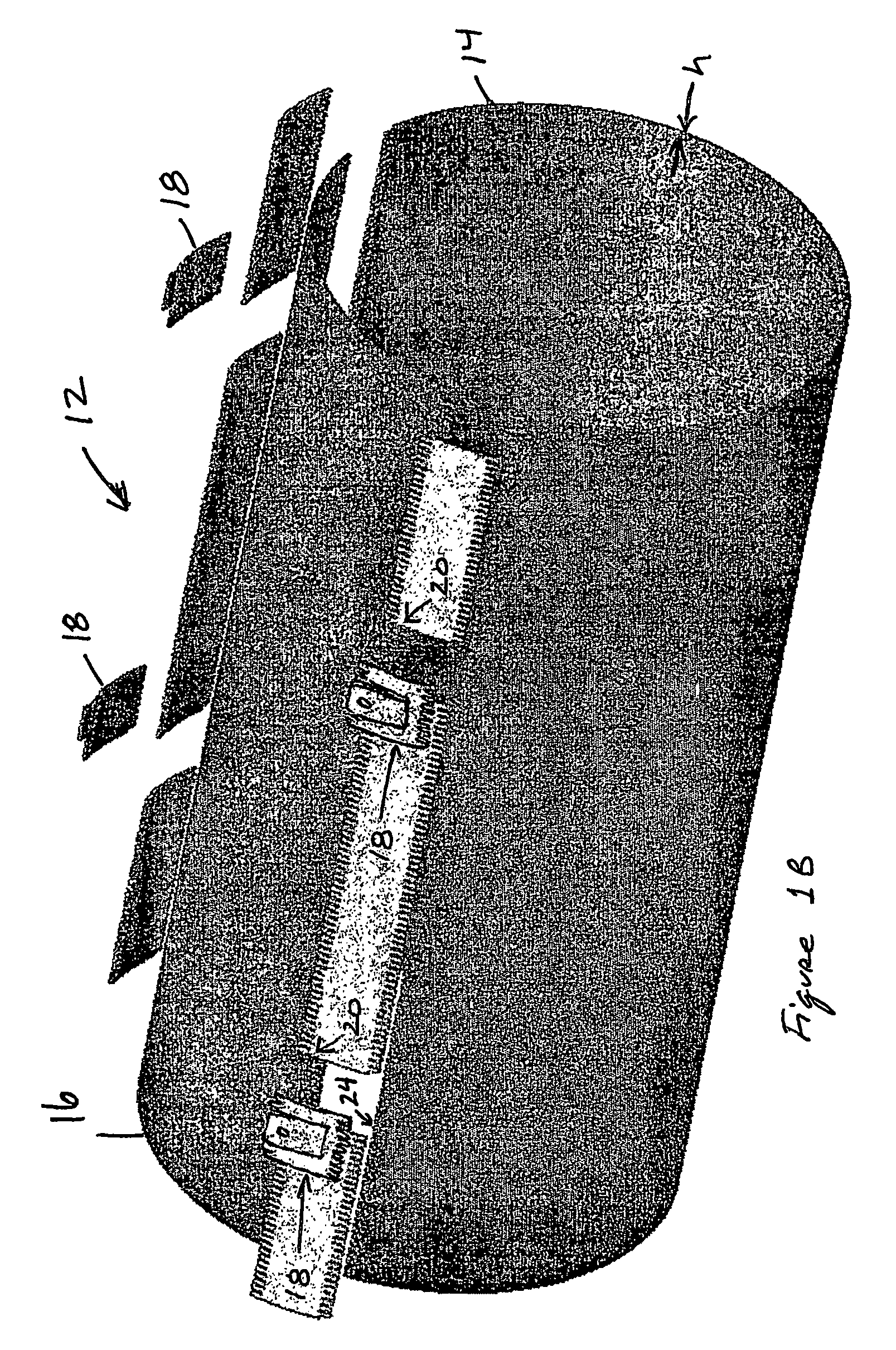Interlocking tooth bond for assembly of fiber composite laminates
a technology of interlocking tooth and fiber composite laminate, which is applied in the direction of transportation and packaging, other domestic articles, and efficient propulsion technologies. it can solve the problems of the resin itself not being able to arrest the growth, the most common type of failure of fiber composite laminate, and the relatively low damage tolerance of the fiber composite laminate. it achieves the effects of reducing interlaminar stresses, improving damage tolerance, and weight and cost efficiency
- Summary
- Abstract
- Description
- Claims
- Application Information
AI Technical Summary
Benefits of technology
Problems solved by technology
Method used
Image
Examples
Embodiment Construction
[0027]The present invention is an improved method of joining two fiber composite laminates together in an end-to-end fashion. The method produces a low profile adhesive bond for structurally splicing two fiber composite panels together. There are two main embodiments of the invention: (1) mechanically interlocking teeth; and (2) non-interlocking teeth. It will be appreciated that many combinations of interlocking teeth, non-interlocking teeth, and offset interlocking and a non-interlocking teeth may also be employed, depending upon the application in which the laminates are used. The tooth-type bond of the present invention virtually eliminates peel in the adhesive joint, thereby reducing the likelihood of an interlaminar failure. Laminates joined by the method of the present invention have substantially improved damage tolerance relative to conventional lap splice bonds. The bond geometry inhibits disbond cracks from propagating down the length of the joint and causing a catastroph...
PUM
| Property | Measurement | Unit |
|---|---|---|
| stress concentrations | aaaaa | aaaaa |
| stress concentration | aaaaa | aaaaa |
| thickness | aaaaa | aaaaa |
Abstract
Description
Claims
Application Information
 Login to View More
Login to View More - R&D
- Intellectual Property
- Life Sciences
- Materials
- Tech Scout
- Unparalleled Data Quality
- Higher Quality Content
- 60% Fewer Hallucinations
Browse by: Latest US Patents, China's latest patents, Technical Efficacy Thesaurus, Application Domain, Technology Topic, Popular Technical Reports.
© 2025 PatSnap. All rights reserved.Legal|Privacy policy|Modern Slavery Act Transparency Statement|Sitemap|About US| Contact US: help@patsnap.com



